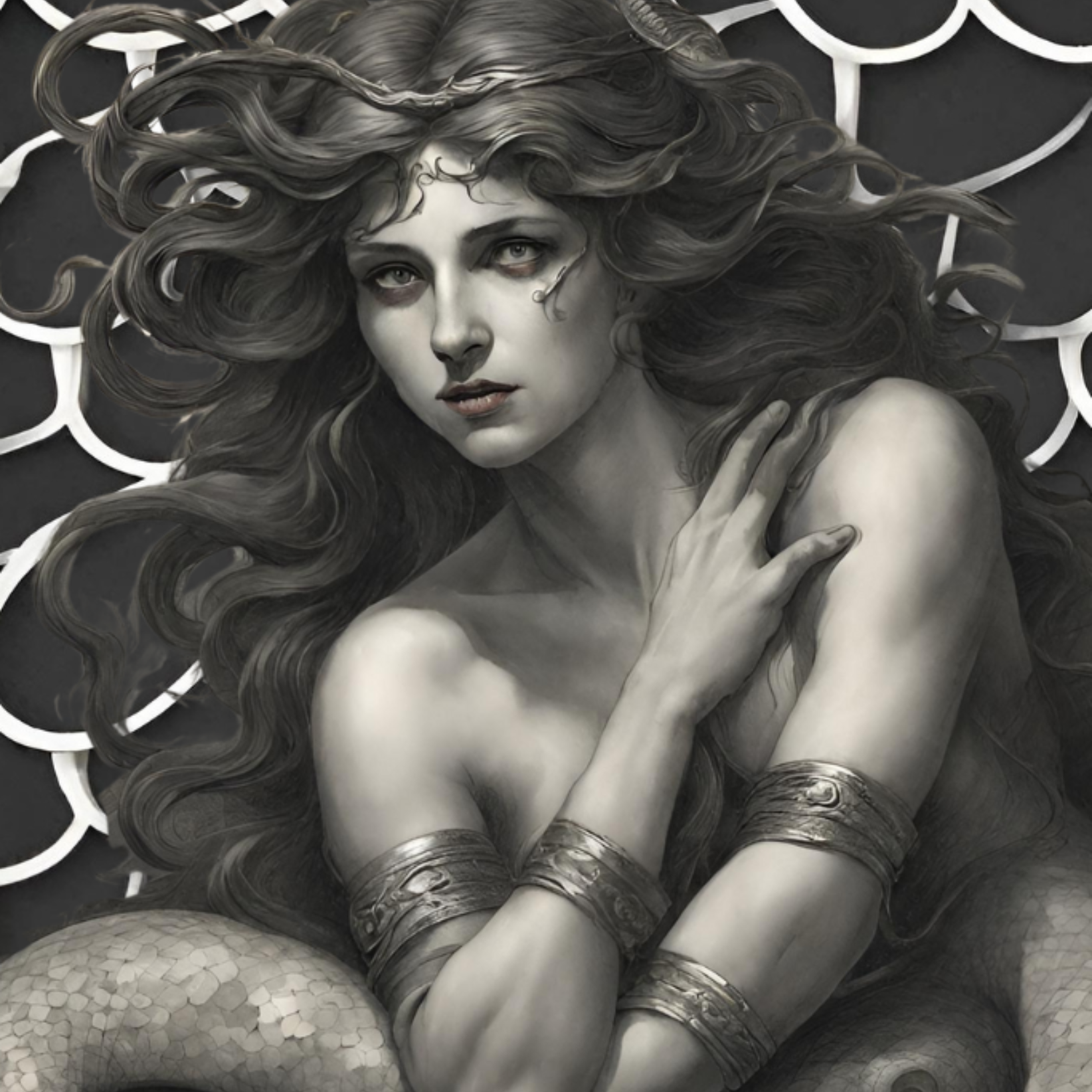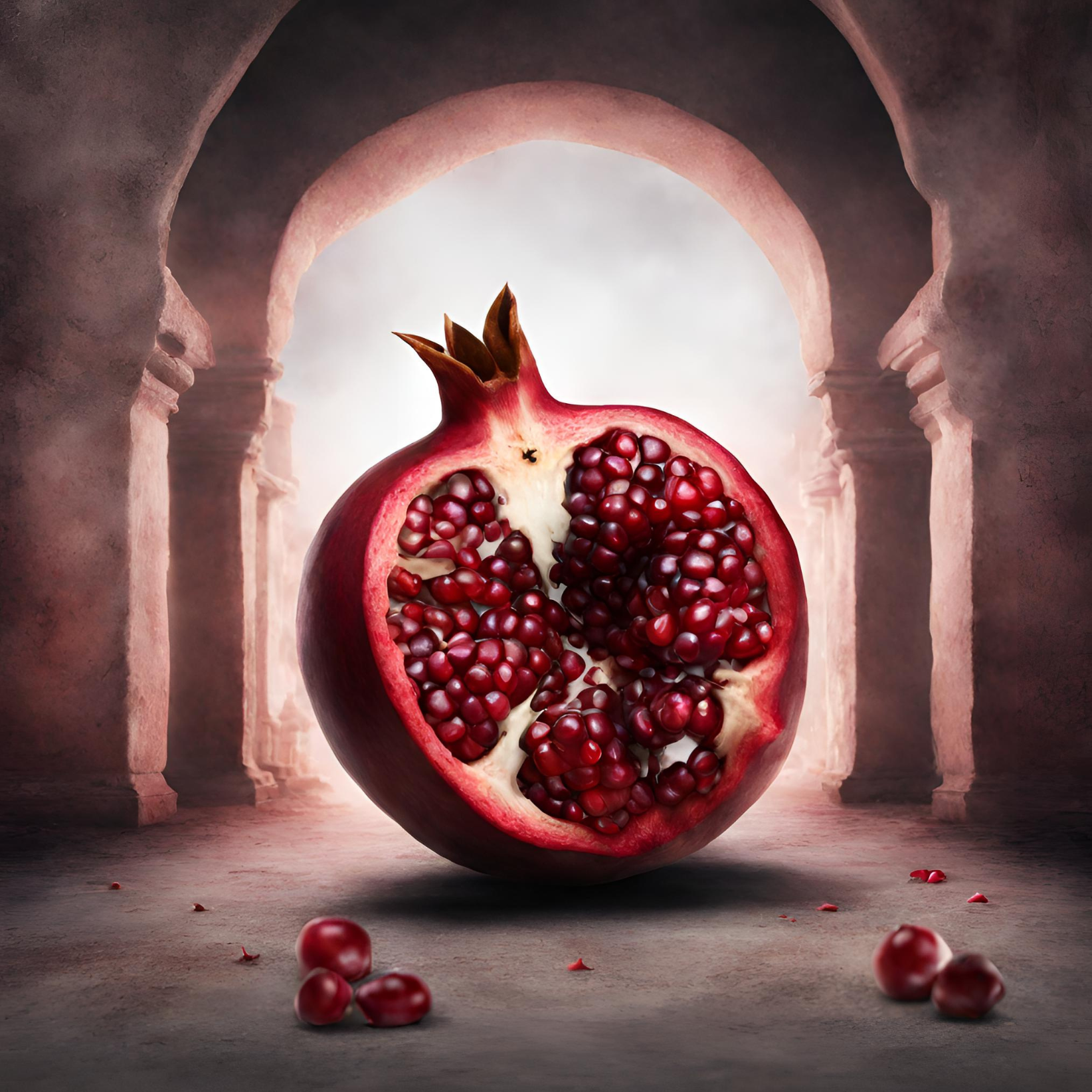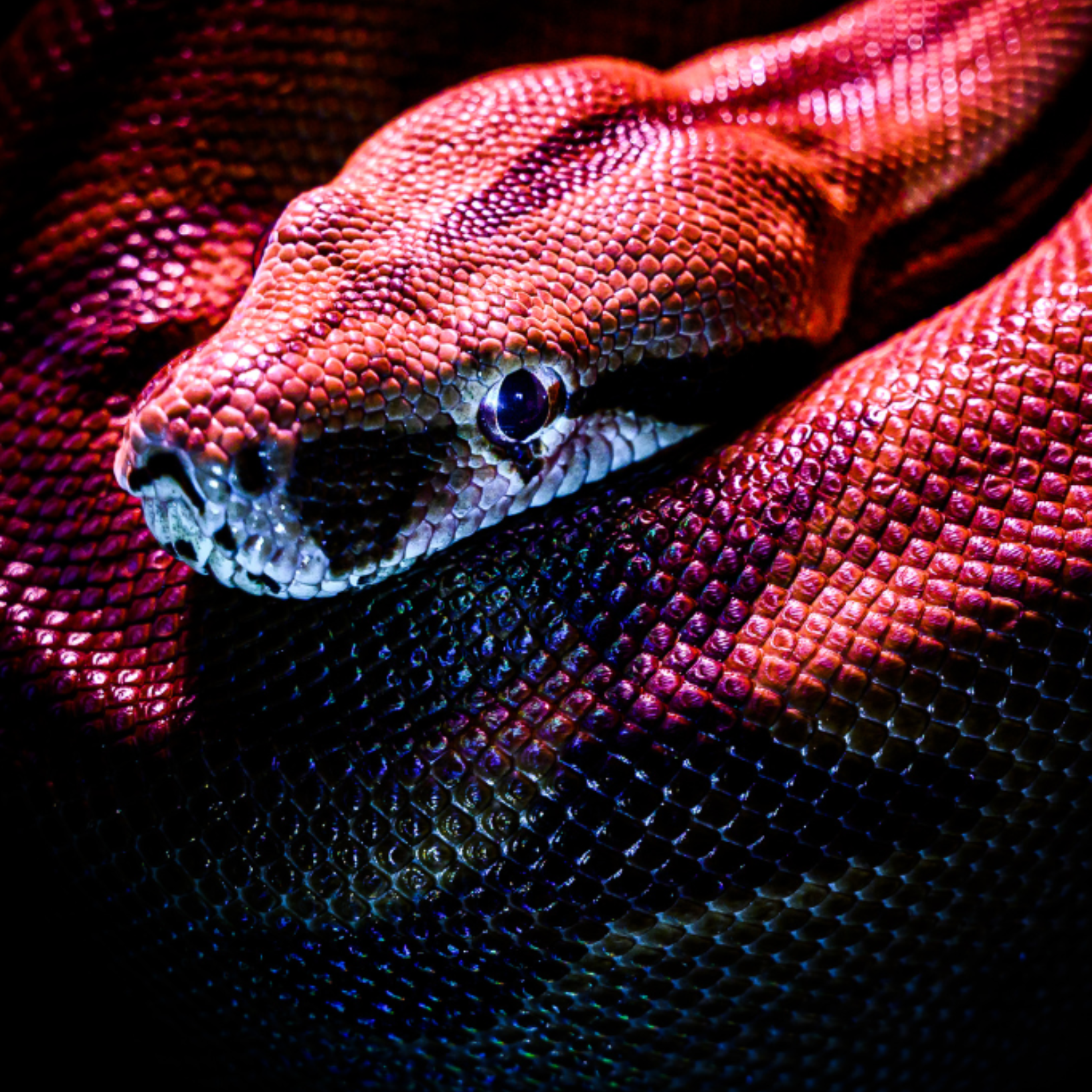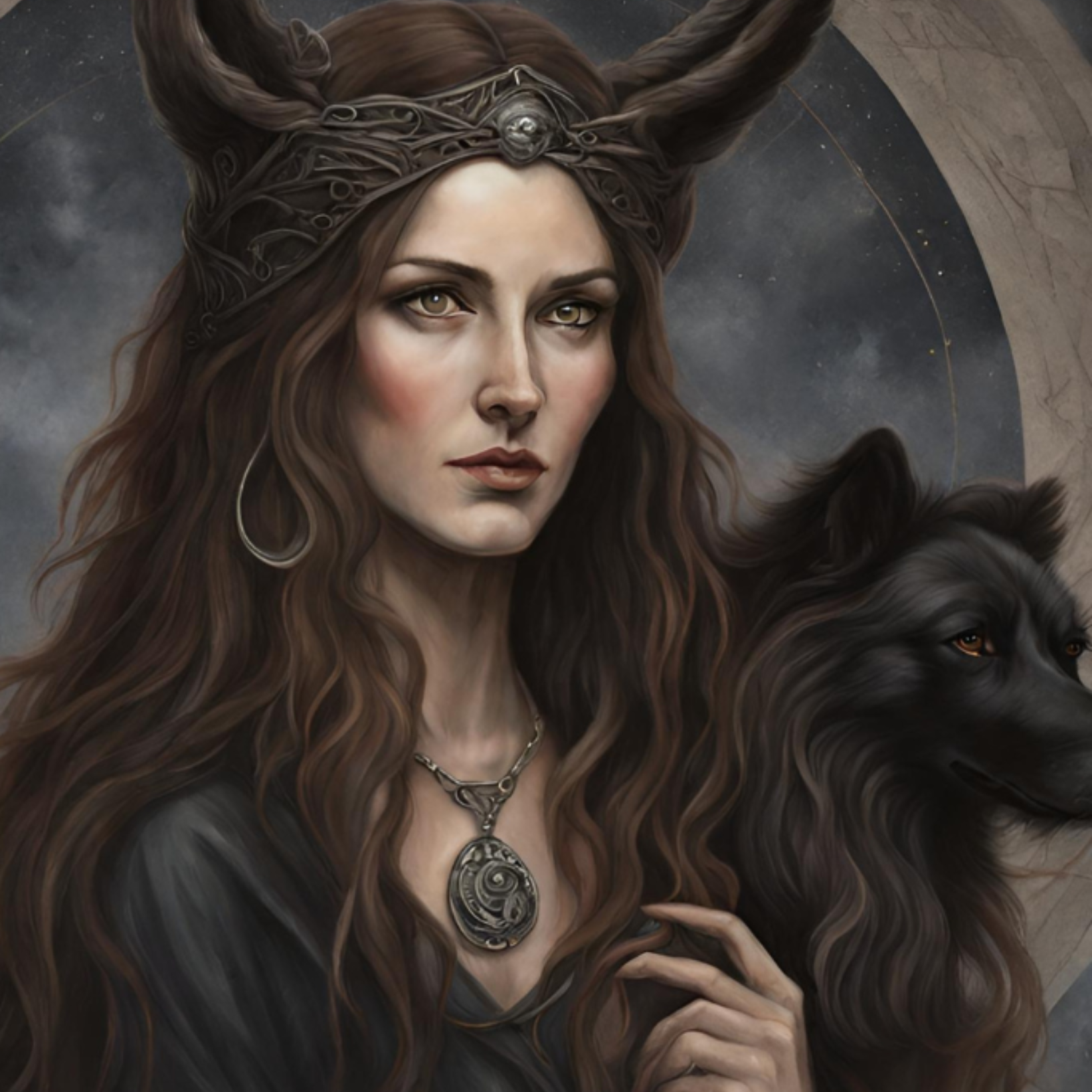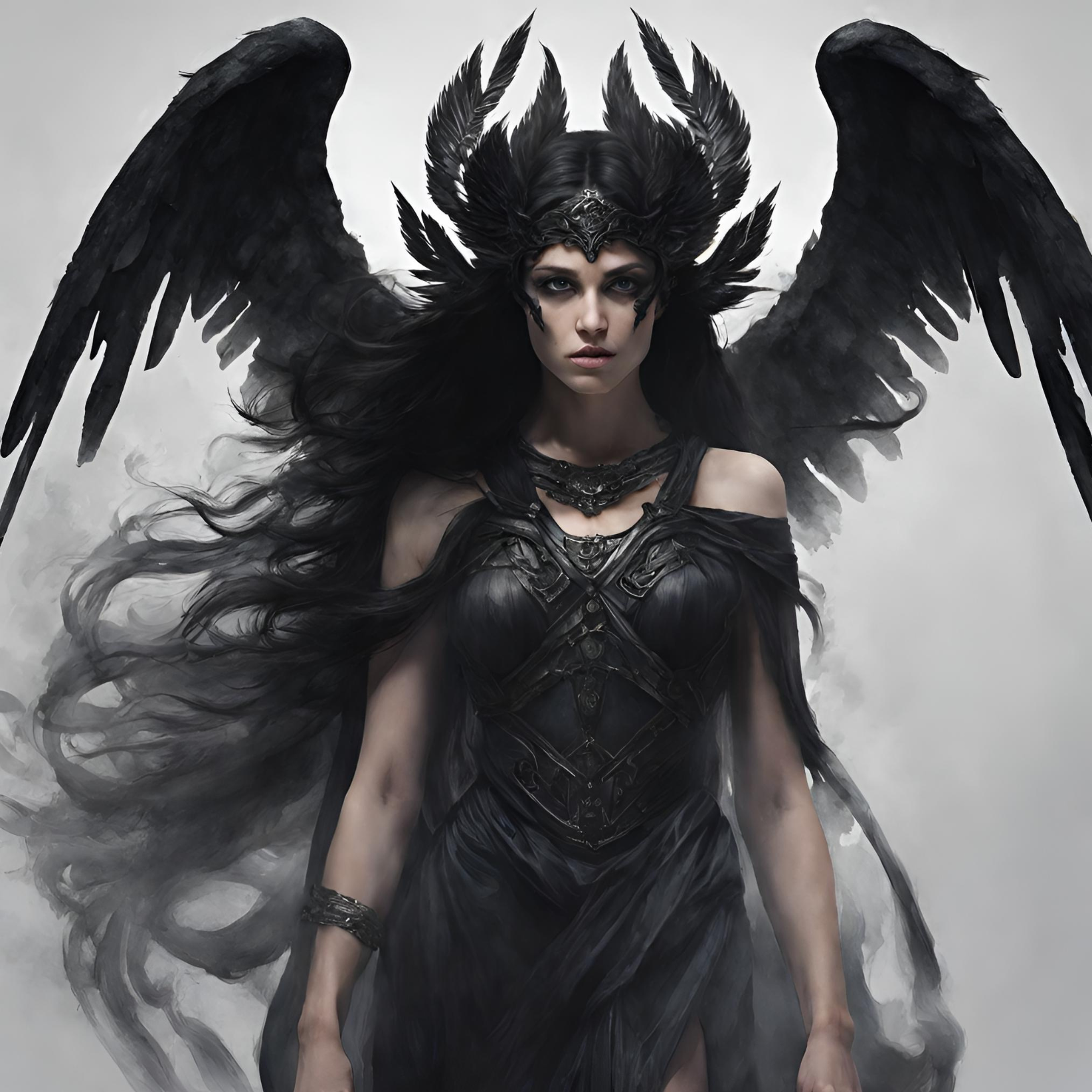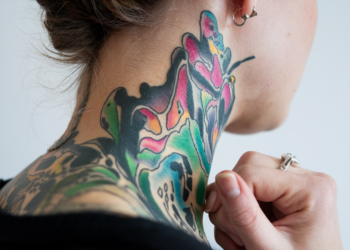Legends and myths from cultures worldwide contain terrifying creatures that lurk in the shadows. In this article, we will highlight some of the most spine-chilling dark beasts from mythology.
We will explore evil creatures from Greek, Norse, Native American, South American, Asian, and African folklore. Let’s dive in!

The Importance of Dark Creatures in Myths
Heroes need villains. Good needs evil. Light needs darkness.
In myths and legends across cultures, sinister beings often represent the ominous forces heroes must defeat. These creatures add drama, tension, and high stakes to the tales. They also symbolize different fears and aspects of human nature. Their inclusion makes for captivating and meaningful storytelling.
Dark Creatures in Greek Mythology
The Minotaur
The Minotaur was a terrifying monster with the head of a bull and the body of a man who was kept imprisoned in the labyrinth of Crete.
According to Greek mythology, Minos, king of Crete, failed to sacrifice a beautiful white bull that Poseidon had gifted him, so the god cursed Minos’ wife Pasiphae to fall madly and unnaturally in love with the animal.
Pasiphae became enthralled with the strong and handsome bull, overwhelmed with a burning desire brought on by Poseidon’s spell. She employed the inventor Daedalus to construct an elaborate hollow wooden cow costume so she could mate with the bull.
From this perverse union, Pasiphae later gave birth to the monstrous Minotaur, a creature that was half-man and half-bull. The Minotaur was kept hidden away in a labyrinth built by Daedalus under the palace at Knossos, later to be slain by the Greek hero Theseus.
Pasiphae’s twisted obsession and lust for the bull was the result of divine punishment, resulting in the birth of a beast that would one day bring further misfortune to her husband’s kingdom.
The Minotaur had an unquenchable appetite for human flesh and would devour people sacrificed to it.
The Minotaur represents man’s bestial nature and the loss of reason to animal instincts.
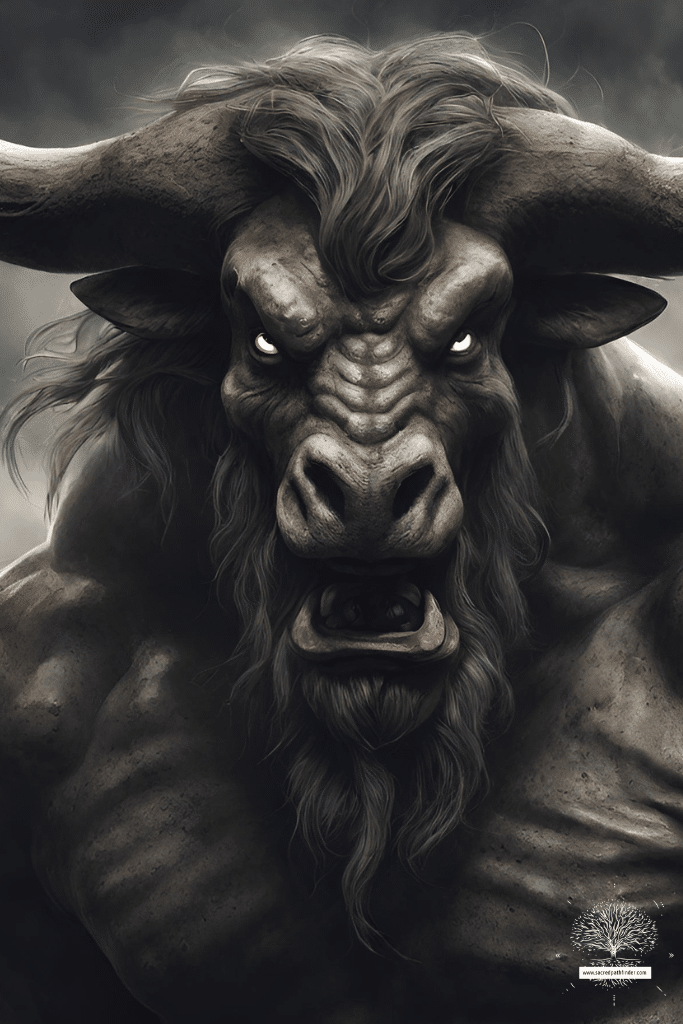
The Erinyes
The three Erinyes were vengeful spirits who would ruthlessly punish those who broke moral laws or spilled family blood. Known as the Furies, these ghostly women with serpentine hair would drive evildoers mad.
In ancient Greek myths, the three Furies – Alecto, Megaera, and Tisiphone – were winged goddesses of vengeance and retribution.
When the Titan Cronus castrated his father Uranus and threw his severed genitals into the sea, the blood and semen from the genitals mingled with the foam of the sea to produce the Erinyes. The Furies emerged as crones with snakes for hair, wings, and draped in black
They mercilessly pursue people who have committed crimes, especially kin crimes like patricide, matricide, or breaking oaths. As goddesses born from blood, the Erinyes seek to avenge murders and violent crimes by inflicting madness and torment on criminals.
The appearance of the three horrible Furies was enough to drive their victims insane even before the goddesses punished them by relentlessly chasing and tormenting them. The Furies personified the anger of the dead and were greatly feared by mortals for their terrifying appearance and merciless punishment.
The myths of the relentless Erinyes highlight the destruction caused when people betray sacred natural laws.
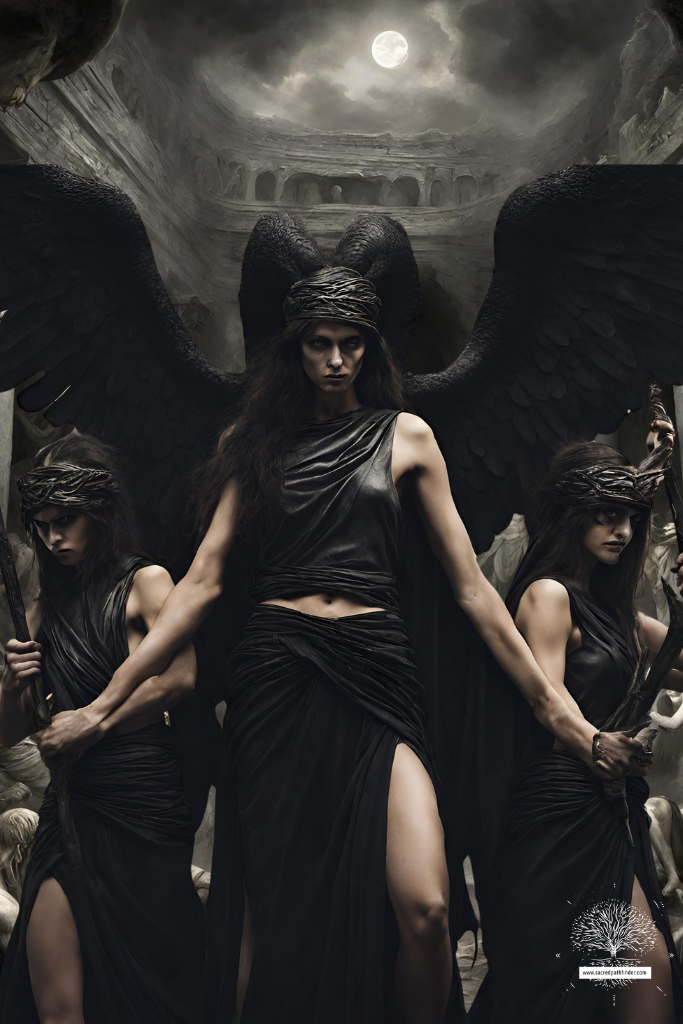
The Lamia
In Greek myth, Lamia was said to have originally been a Libyan queen who was a mistress of Zeus. When Zeus’s wife Hera discovered the affair, she became enraged with jealousy.
Hera cursed Lamia by killing all of her children that she had with Zeus, and also transformed her into a child-eating daemon with the tail of a serpent below her waist and huge vampiric fangs instead of teeth.
This nightmarish monster was condemned to wander the earth for eternity, hunting and preying on human children as retribution for her dealings with Hera’s husband Zeus.
Some myths state that Lamia was also gifted with the ability to remove her eyeballs to regain her former luminous beauty for a short time to entice hapless victims.
Over time, accounts of Lamia evolved to describe her less as a literal monster, but as an evil spirit said to kidnap and devour children. Her name became used as a label and eventually synonymous with a witch or enchantress negatively associated with children.
The myth of Lamia underscores dangerous jealousies and the terrible grief that can drive people to cruelty.
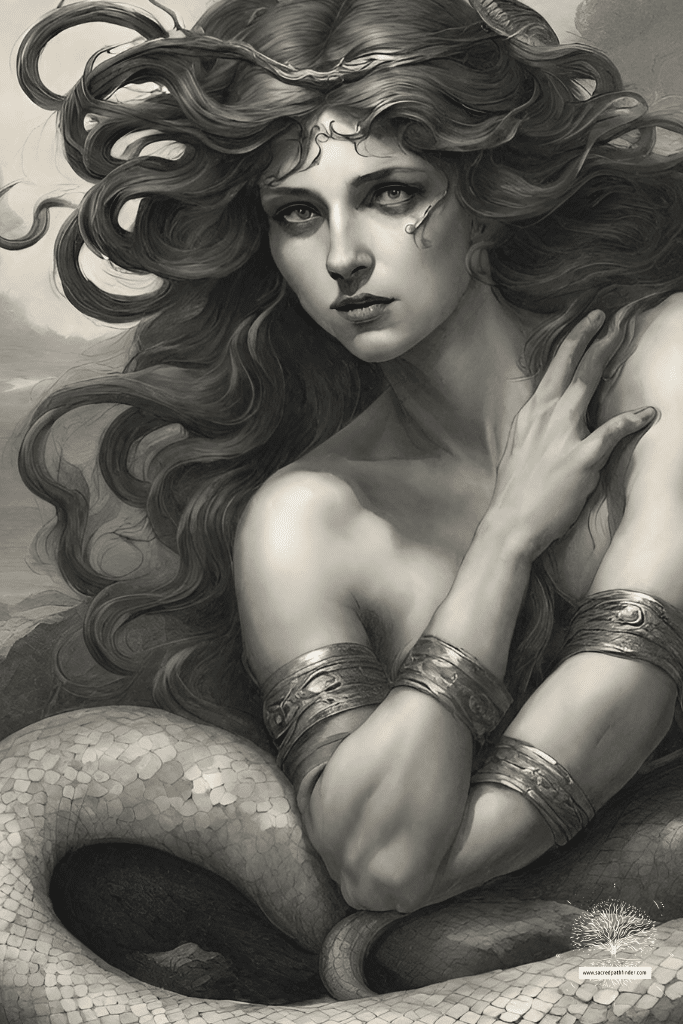
Dark Creatures in Norse Mythology
The Jötunn
The Jötunn were a race of giants who represented the destructive forces of nature. Myth tells that the Aesir gods warred with these towering elemental beasts, who would blindly crush anything in their path
These powerful elemental giants represent the destructive forces of nature. They were among the first living beings to emerge at the dawn of creation.
The Jötunn were born from the yawning void named Ginnungagap located between the fiery realm of Muspelheim and the frozen realm of Niflheim. The intermingling of extremely cold air from Niflheim and fiery sparks from Muspelheim caused the ice of Ginnungagap to melt and drip, and from these primordial drops, the ancestral father of the Jötunn race, Ymir, was formed.
The Jötunn would go on to continue propagating their kind as they represent the violent and untamed aspects of nature.
As Norse cosmology evolved in prehistory, the Jötunn took on antagonistic roles against the gods, seen as more orderly anthropomorphic deities. The Jötunn would be frequently portrayed as enemies, rivals, or chaotic threats to the Norse pantheon and mankind overall.
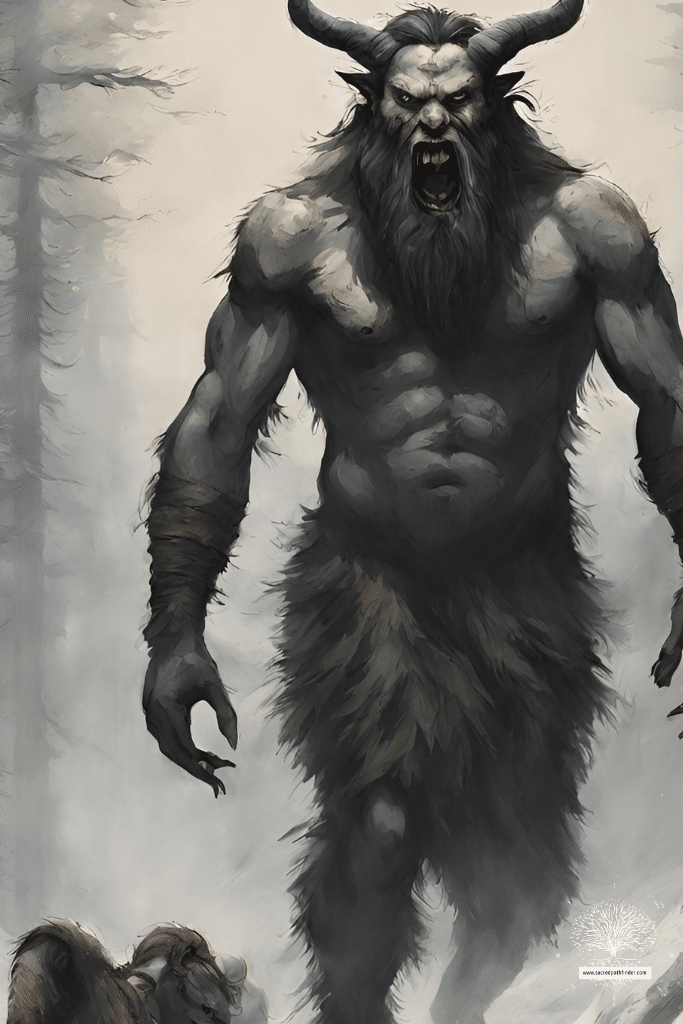
Jörmungandr
The Midgard Serpent, also called Jörmungandr, was a snake of monstrous size that circled the ocean and could grasp its own tail. When it lets go, the world will end.
In Norse legends, the massive serpent Jörmungandr is believed to have been spawned from the union of the trickster god Loki and the giantess Angrboða. Loki mated with the fearsome Angrboða in the realm of Jötunheimr, resulting in several monstrous children – the wolf Fenrir, the underworld goddess Hel, and most notably Jörmungandr.
The mighty sea serpent was tossed into the vast ocean that encircles Midgard by the gods once it grew tremendously large and threatening. There the beast was condemned by Odin to circle the world unrestrained, with its massive body growing so huge that it can bite its own tail while its head moves through the water and its body coils across the sea floor.
It was said that Jörmungandr would one day free itself from its aquatic confines to seek vengeance during Ragnarök, destined to poison the skies with venom during an epic battle with Thor before the world’s end.
The leviathan symbolizes cyclical time and destructive chaos that brings all things to an end.
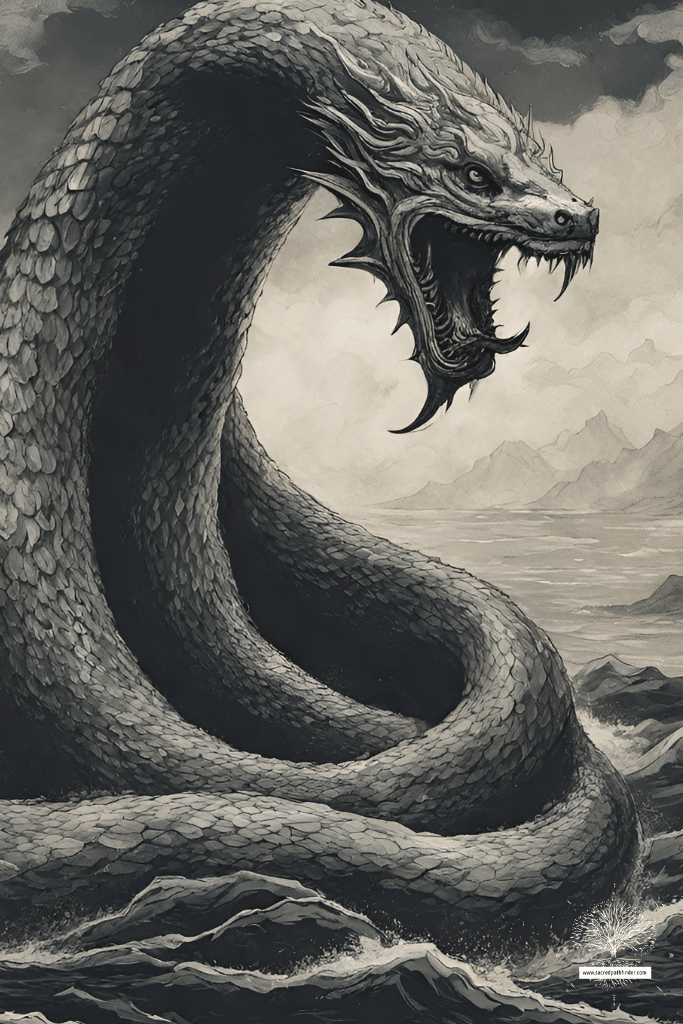
Hel
In Norse myth, Hel ruled the icy underworld realm of the dead. She had power over the dishonorable slain who entered her misty domain after death.
It was said that the giantess Angrboða coupled with Loki and bore a daughter named Hel. She came to preside over the Chthonic afterlife realm also called Hel after Odin cast her and her siblings out of Asgard upon discovering these creatures born of Loki’s union to a Jötunn.
Hel was given dominion over a damp, gloomy, misty world within Niflheim to rule over those that died dishonorably or of sickness and old age.
Her appearance and nature were imagined as half alive/beautiful on one side but morbid/corpse-like on the other, contrasting the opposing conditions of life and death. Hel would go on to accept the newly deceased into her cold underground kingdom as they crossed the grim river Gjöll and passed her fearsome hound named Garmr.
As daughter to an Aesir god and a giantess, she was considered to have one foot in the worlds of divinities and men and one foot in the world of primordial giants. Thus she was fittingly deemed to have the power to determine the fates of mortal souls entering the afterlife in Norse mythology.
The myth of the death goddess Hel speaks of the inexorable fate that awaits all mortals in time.
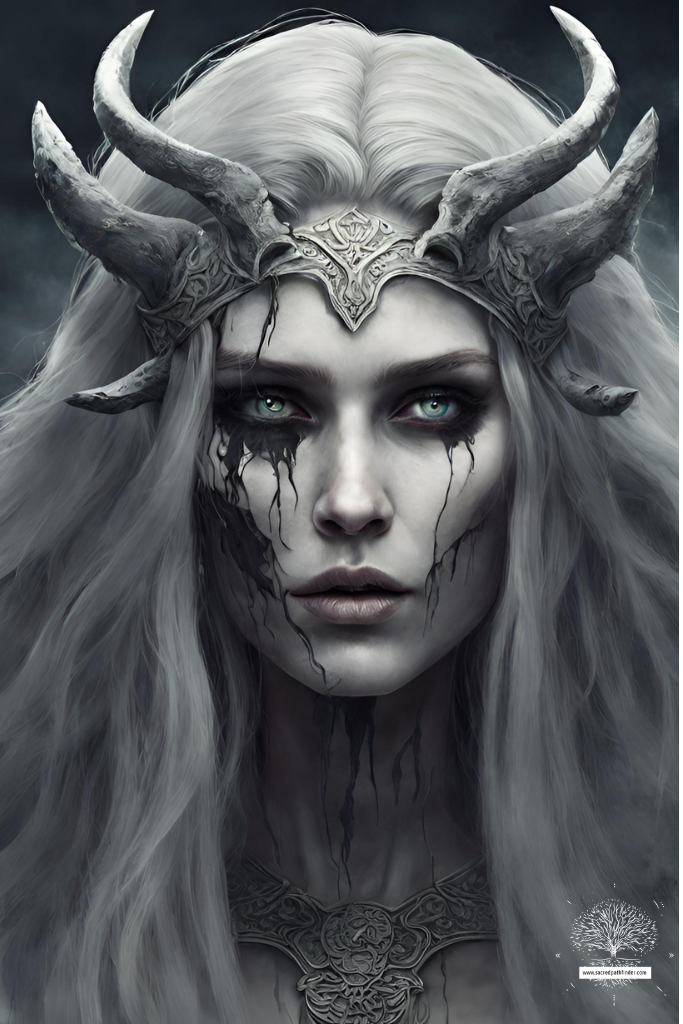
Dark Creatures in Native American Mythology
Wendigo
The Wendigo was a demonic man-eating spirit that could possess human beings, turning them into ravenous cannibals.
This terrifying supernatural spirit appeared prominently in the legends of the Algonquian peoples of North America, and is most frequently associated with death, murder, insatiable greed, and anthropophagy – the consumption of human flesh.
While descriptions of the Wendigo vary across different tribes, it is broadly understood to have once been a mortal human that became transformed into a dangerous, cannibalistic creature through the committing of atrocious acts or through being infected by other Wendigos.
Those believed to be at higher risk were individuals who had resorted to eating human flesh during exceedingly harsh winters when food was scarce in the bitter cold. Anyone giving in to murder or cannibalism, even to survive extreme conditions, was at risk of becoming possessed by the rapacious spirit of the Wendigo.
Its appearance afterward shifted to reflect its corrupted inner nature – gaunt and ghastly, with yellow decaying skin pulled tautly over its bones and accompanied by an overwhelming stench.
With an insatiable hunger for human flesh, the cursed Wendigo both spreads its affliction and brings death and misfortune through its endless craving.
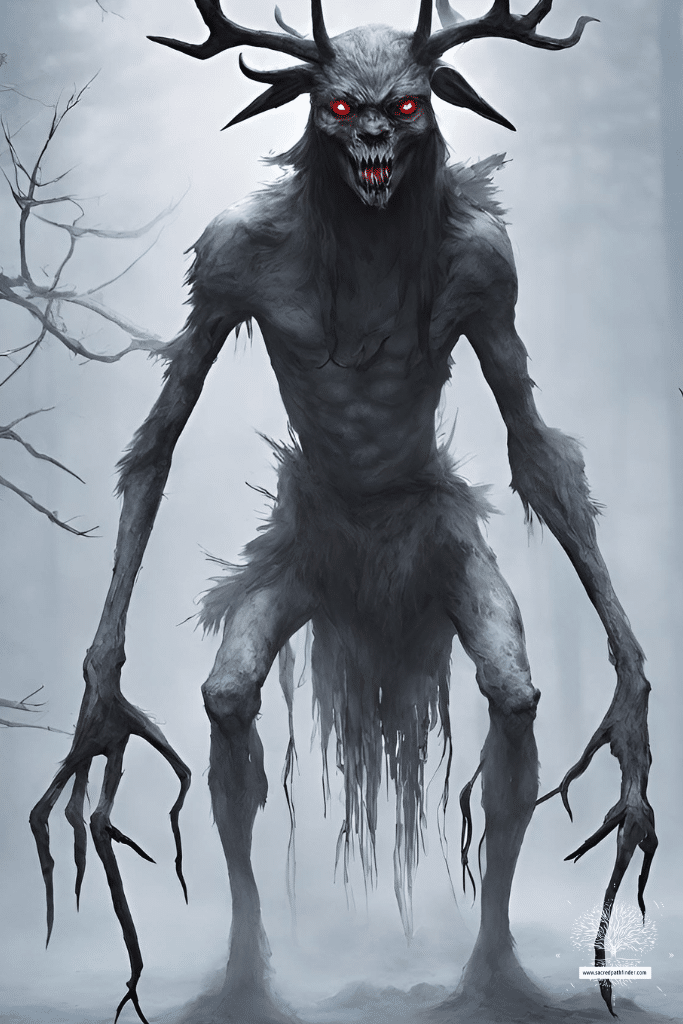
Pukwudgie
Pukwudgies were two to three-foot-tall trolls in Wampanoag folklore who would waylay travelers in the woods and attack people who disrespected nature.
The Pukwudgies are supernatural forest creatures best known for their mischievous and often dangerous natures. While Pukwudgie lore can vary between different tribal traditions, they are frequently portrayed as two-to-three-foot-tall humanoid beings with enlarged noses, fingers, and ears.
Pukwudgies were believed to have been created by the trickster God, Manabozho, an important deity found in many Algonquian stories.
In some tribal legends, the Pukwudgies were formed when Manabozho collected poisonous snakes, arrows, and stone knives from their hiding places in order to protect humans. He then transformed the weapons and serpents into a new race of small forest creatures.
In other tales, the newly created Pukwudgies grew spiteful of humanity and began using the very weapons Manabozho gave them to torment, harm, and attack people they encountered in the woods.
With their origins tied to both mankind’s mythological protector and his dangerous creations, Pukwudgies embodied the fine line between guardianship and hostility toward mortals.
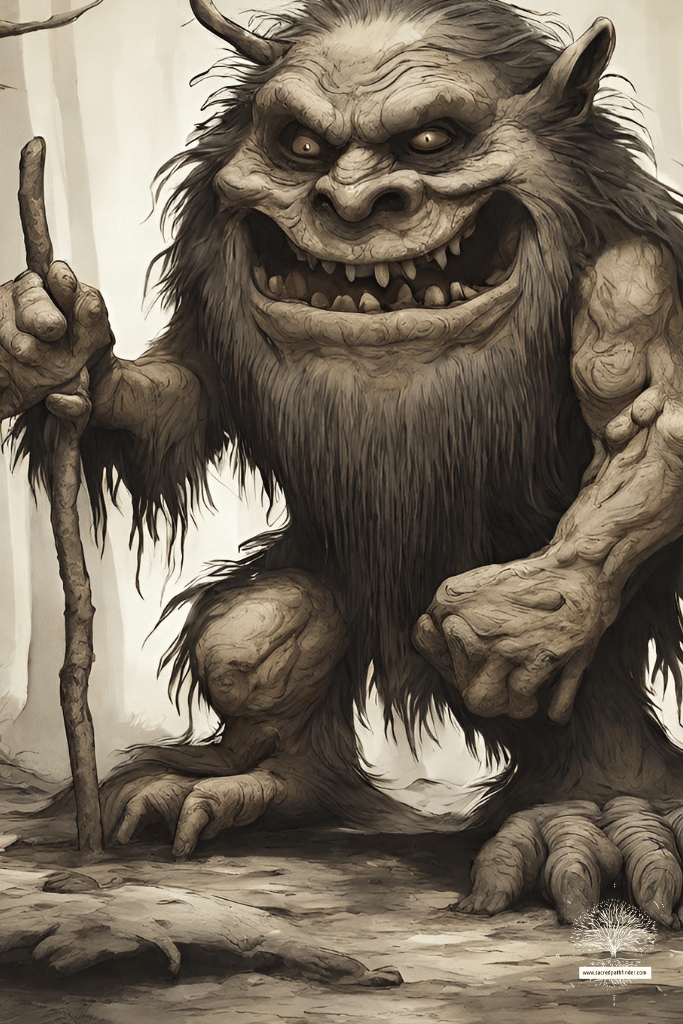
Thunderbird
The Thunderbird is a powerful, sacred creature in the legends of certain North American indigenous peoples. Though descriptions can vary, it is often portrayed as an enormous bird of prey, with its wingspan large enough to stir up storm clouds as it soars through the skies.
Accounts of the Thunderbird’s origins tend to highlight its innate ties to seasons, storms, and the natural forces. In some Pacific Northwest Coast tribes like the Haida, Tsimshian, and Kwakwaka’wakw, the enormous Thunderbird was thought to have originated when a Haida shaman collected storm clouds and rainbows in a cedar box which he brought to life through ritualistic dancing and songs learned from the creator spirit, Na Koja Ya’aas.
Its loud flapping wings were said to generate rumbling thunder, while blinking its lightning-filled eyes shot forth terrifying lightning bolts from the skies.
The Haida believed the Thunderbird controlled rain and storms, punishing those who overhunted by withholding needed rains for the community’s resources to be replenished. Representing nature’s sublime power, it was both revered and feared.
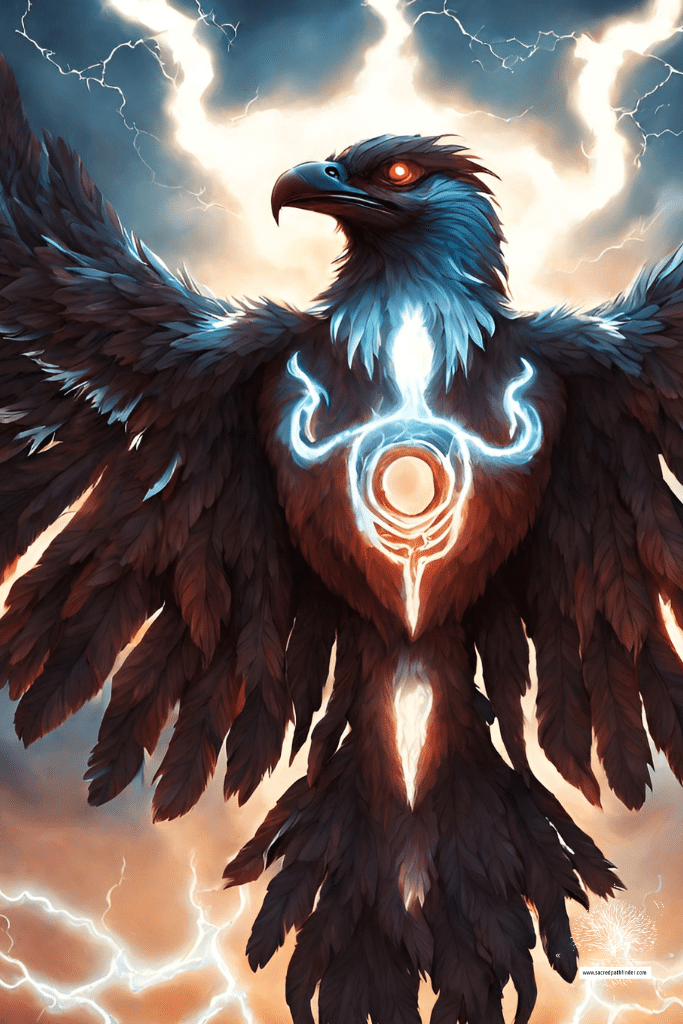
Dark Creatures in South American Mythology
Amaru
Amaru was a mythical snake worshipped by the Inca. It was believed to live in the Milky Way galaxy and represent the rainbow.
The Amaru, sometimes known as the Sachamama, is a revered yet feared mythical serpent deity that has been a prominent part of indigenous religions along the Andes Mountains and rain forests of Peru for thousands of years.
According to Inca mythology, when the creator god Wiracocha formed the land and heavens, he spawned the first Amaru to serve as a protector spirit to safeguard the most sacred animals of its watery domain.
From this first serpent demigod, it was believed that all Amaru were born, hatching from eggs fertilized by this original divine immortal snake. As a master over all snake kind, the growing numbers of Amaru cruise swiftly along jungle waters and lurk within cenotes and underground caverns, the realms they were said to oversee, and the sources of their magic.
The Inca would offer beautiful women as brides in lavish ceremonies to the Amaru royals in lakes like Titicaca in exchange for blessings of healthy crops and livestock.
To this day, shamans along the Peru-Bolivia border revere Amaru spirits as bringers of rain and fertility, though warn against disrespecting them to avoid great floods or drought.
Amaru symbolized the serpentine energy said to reside within the earth and water.

Mapinguari
The Mapinguari was a South American Bigfoot-like creature with long claws and backwards feet. According to legend, it protected the rainforests.
The Mapinguari is a monstrous cryptid said to stalk the lush forests of the Amazon basin, particularly feared across parts of Brazil, Bolivia, Paraguay, Peru, and Colombia. According to local mythology among several modern-day tribes and ethnic groups as well as accounts from earlier European colonists, the Mapinguari may have its roots in prehistoric times when giant ground sloths and armadillos the size of small cars roamed South America.
Witnesses describe it as a massive, ape-like beast towering as high as eight feet, reeking of foul odors, with long dangerously sharp claws and nightmarish backward-facing feet along with one eye and a terrifying toothy maw in its belly.
Some legends suggest these characteristics originated from a symbolic curse by a powerful shaman to terrify enemies, imbuing the creature with physical and behavioral traits antithetical to normal life in the forest.
Other oral histories propose that the Mapinguari emerged from deep burrows where the last remaining giant Cenozoic mammals hid from mass extinction, later corrupted into man-eating monstrosities haunting humanity’s collective memories.
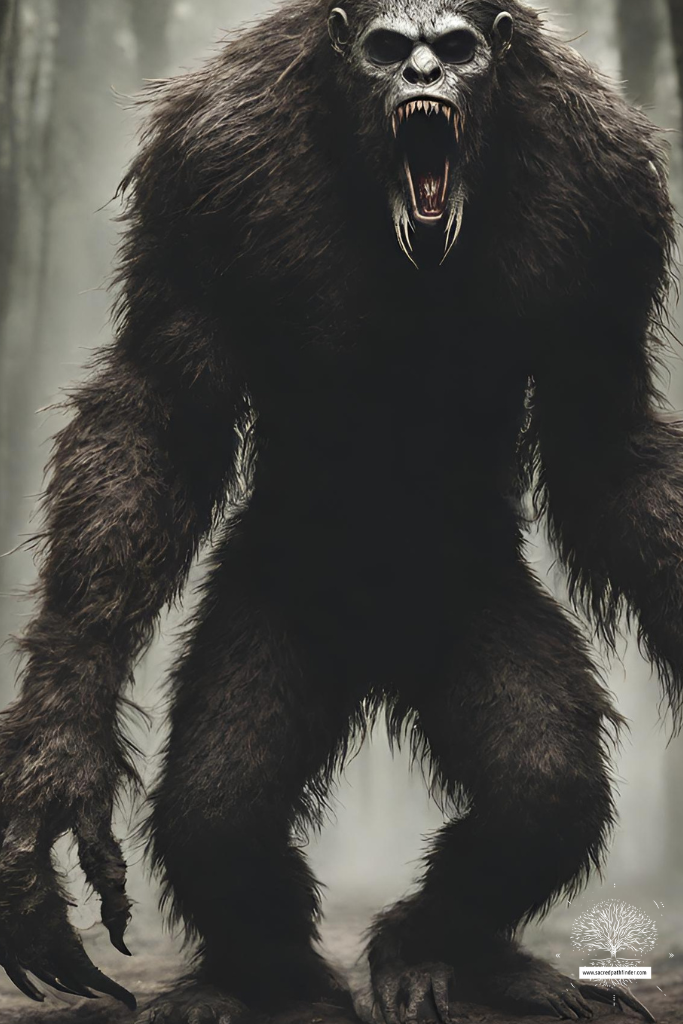
Chullachaqui
The Chullachaqui is a mythological shapeshifter prominent in the Amazonian folklore of several indigenous peoples living in jungle regions of Peru, Brazil, Ecuador and Bolivia.
According to Shipibo-Conibo and other Latin American legends, the first Chullachaqui emerged directly out of the mysterious, dense forest itself. More specifically, during early times when humans and nature were closely intertwined, a member of an Amazonian tribe used sacred songs, ceremonial dances and intense meditation along a hidden rainforest river gorge to achieve advanced shamanic transformation.
Seeking to transcend into a powerful magical guardian for his people’s lands against future invaders, he unwittingly exceeded mystical bounds and was slowly consumed by the spirit of the living jungle, fusing with it physically and mentally.
Now a part of the forest itself and consumed by a desire to protect it from mortal destruction, the newly-formed Chullachaqui creature began playfully yet aggressively misleading loggers, researchers and other perceived threats toward disorientation or harm to keep the Amazon intact.
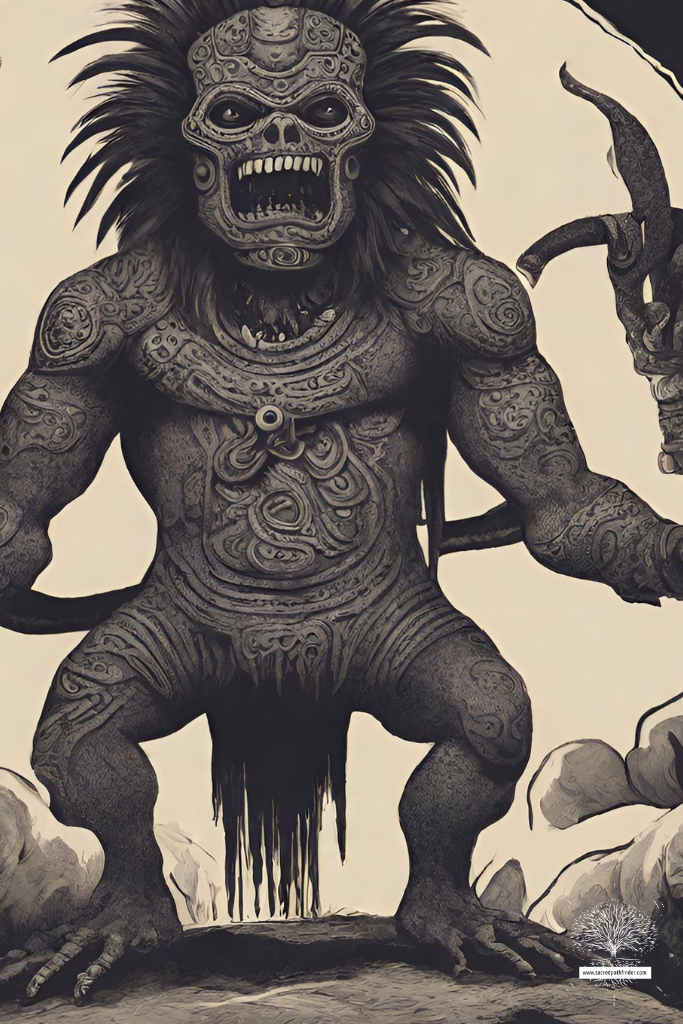
Dark Creatures in Asian Mythology
Rakshasa
The Rakshasas are a race of mythological humanoid beings that play the role of demons and malicious nature spirits in Hindu and Buddhist texts and scriptures. While their origins shift across various South Asian mythic traditions, Rakshasas are commonly described as being born from Brahma’s foot at the start of time.
When Brahma was creating the universe, his first creations were the Devas (benevolent celestial beings) followed by the Asuras (power-seeking deities). Frustrated that some of his creations were evil, Brahma then shed tears that brought forth the first Rakshasas – a race of cannibalistic spirits with magical powers living in forests and ruins.
Their fiendish natures are considered ultimately responsible for their purpose as beings that threaten dharma and divine authority across realms.
Other tales state the evil Asura Ravana performed great penances to Lord Brahma and was granted a boon to bring forth a powerful race that could oppose the Devas, leading to his creation of the first multitudes of man-eating Rakshasas.
Power-hungry and destructive, the savage Rakshasa reflects humanity’s vice for violence.
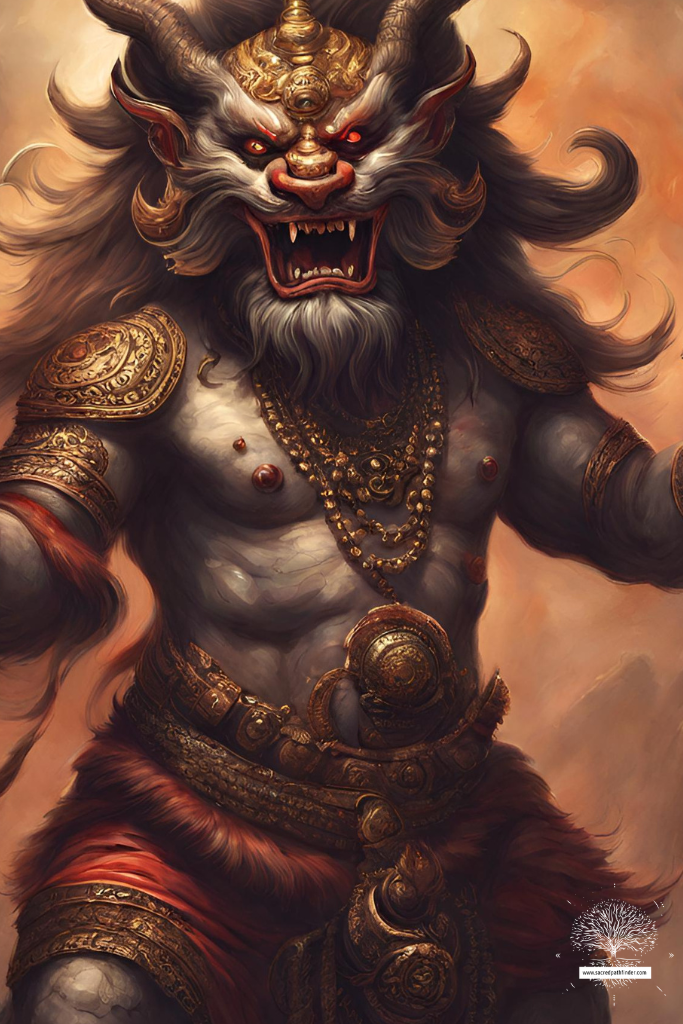
Preta
The Preta, also known as hungry ghosts, are supernatural creatures that have their roots in ancient South Asian religions and traditions. They are most prominently featured in Hindu, Buddhist, and Jain texts but also appear in Chinese, Tibetan, and Southeast Asian legends as well.
It’s believed Pretas were first conceived of in proto-Hinduism, stemming from the funerary rituals and offerings of the Vedic civilization. The souls of those who were not properly buried, had no living descendants, or led selfish lives were thought to be cursed to roam as famished spirits reliant on leftover funeral offerings.
The concept evolved as rebirth beliefs became more established in later Indian religions. Pretas were viewed as the souls of wicked people being punished by reincarnating into these tortured, hungry entities until their karma improved.
Descriptions portrayed them as beings with huge bellies and tiny mouths that could never consume enough to be satisfied – a metaphor for their greed in previous lives.
They serve as cautionary figures and their tales propagate ideals of charity and selflessness across many Asian faith traditions.
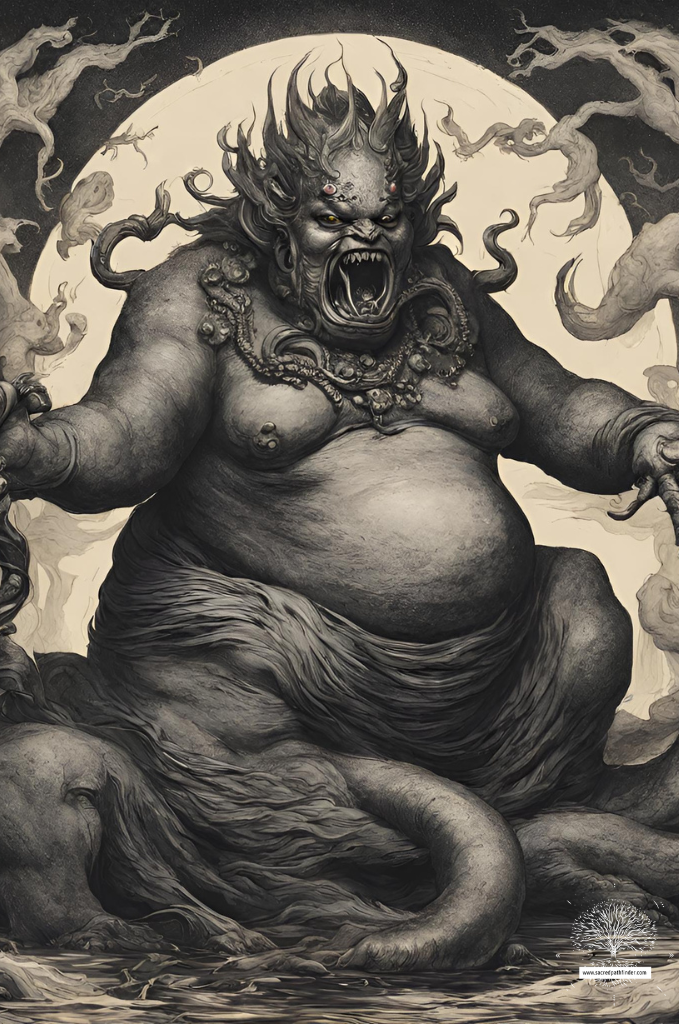
Pontianak
Stories vary across countries like Indonesia, Malaysia, and the Philippines, but most versions describe Pontianaks as the spirits of women who died during childbirth and emerged from their graves in this sinister supernatural form.
According to Malay mythology, the first Pontianak came into being when a woman who suffered terrible pain and isolation in the jungle while giving birth called out in rage to all the dark spirits that surrounded her.
Offering the blood of her newborn, she made a sacrifice in order to become something no longer human herself. Answering her cry, evil entities filled her transforming body, turning her into the prototypical she-devil Pontianak which gained sustenance from feeding on human vitality ever since through her elongated fang-like teeth.
Over the ages, this curse would pass its way onto other women, with superstitions holding that improper burial of a woman who died from childbearing anguish could also spawn more such blood-drinking wraiths. The cries of a Pontianak are said to strike deep fear in any who hear them.
With her vicious vampiric nature, Pontianak symbolizes the wounded feminine turned vengeful demon.

Dark Creatures in African Mythology
Anansi
Anansi is a prominent folkloric figure of both human and spider attributes among Akan and Ashanti tribe storytelling traditions dating back at least to the 17th century.
In oral myths tracing back to early Ghana and the Bronze Age, it is said that in a time shortly after the heavens and earth were created, there were no stories in the world and knowledge belonged only to the sky god Nyame.
The fast-talking folk hero Kwaku Anansi used cunning tricks and intellect to obtain the stories from Nyame and brought them down to share freely across the land. Later tales evolve the figure into a deity appearing more spider-like, though retaining human speech and great wit, who teaches people the skills of weaving and the alphabet as well as continues dispersing the world’s wisdom.
As such, Anansi stars in countless folk tales as a small but clever and quick-thinking spider protagonist who triumphs over those larger than him. He is celebrated as bringing language and writing to humanity as a divine messenger while promoting virtues of communication, wisdom, adaptability and intelligence reflected in the spider’s image and behavior in nature.
Tales of Anansi showcase how intelligence and wit can triumph over size and strength.
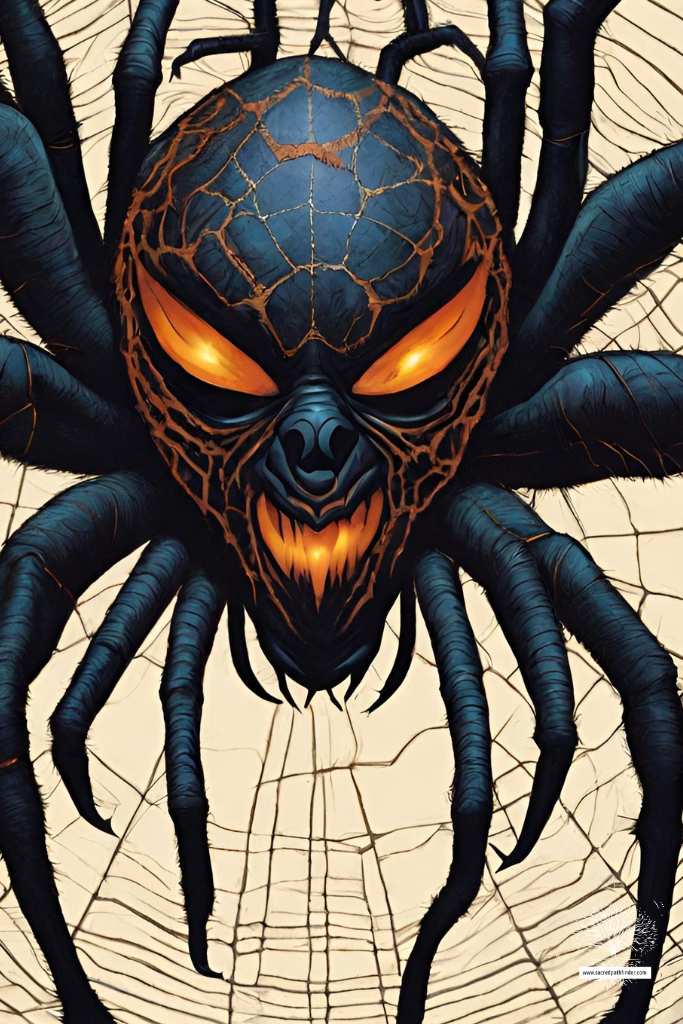
Adze
The Adze was a malevolent vampire ghost taking the form of a firefly in West African legend. It would sneak into homes at night to suck the blood of sleeping children.
The Ewe people of Ghana and Togo believed the Adze originated from the innocent child of another supernatural being. According to oral legends across parts of West Africa, this progenitor Adze was born to the river-dwelling Mami Wata spirit but became corrupted by an evil, unearthly force.
When the creature reached adolescence, its nature transformed into a sinister vampire-like form that needed to feed on blood and life essence to survive. When its attacks grew uncontrolled, the river spirit was unable to defeat the Adze she had birthed and could only exile the now-monstrous entity to roam forests and dry lands.
Bereft of the waters that had once sustained it, the Adze seeks to drain vitality from mortal men and women by night, using screeches to paralyze victims before sucking their blood with hellish intensity.
Those targeted who survive the assault can be left mentally unstable and eventually die from a slow, irreversible wasting illness thought to be spread by the Adze’s curse.

Popobawa
The Popobawa is an evil spirit deeply feared in Swahili folklore, especially along the coasts of Tanzania and Kenya. While stories vary across villages, a common telling is that the first Popobawa was born from the tempestuous affair between a troubled native woman and an aggressive outside merchant sailing through the region.
As resentment grew between different factions in her Trading Center town, their tryst spawned a creature not fully human that was said to assume a bat-like appearance at night.
Feeding off the growing hatred among the people, the freakish Popobawa vampire would terrorize both sides to maintain general distrust and animosity during tense times. Its unnatural origins tied to social unease and discord have led many locals to believe later appearances of the vampiric shapeshifter preceded outbreaks of violence, keeping communities insecure and on edge through decades of unrest.
Those few who claim to have survived the demonic Popobawa’s attacks are gripped by a lingering horror that the malformed beast will return again one night.

Conclusion
We hope you enjoyed learning about these 18 dark beasts from legends around the world. What mythical creature would you want as a tattoo symbol?
Share this article with a friend who loves creepy stories.
Don’t forget to subscribe to our newsletter for more fascinating articles on myths and creatures.

